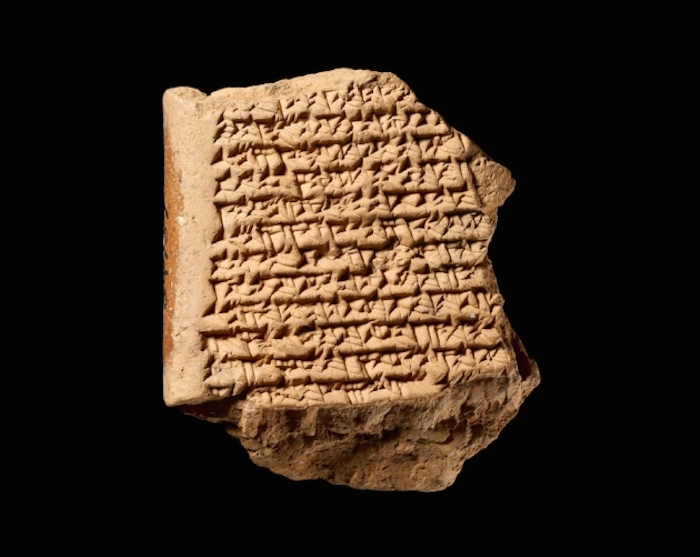.

This Babylonian tablet, written in cuneiform script, contains geometric calculations used to track the motions of Jupiter.
-
A reanalysis of markings on Babylonian tablets has revealed that astronomers working between the fourth and first centuries bc used geometry to calculate the motions of Jupiter — a conceptual leap that historians thought had not occurred until fourteenth-century Europe.
The discovery was made by science historian Mathieu Ossendrijver at the Humboldt University in Berlin, who translated and interpreted five clay tablets that were marked with the tick-shaped imprints of the ancient cuneiform script1. The tablets were excavated in the late nineteenth century and are kept at the British Museum in London.
By the seventh century bc, astronomers in Babylonia — a state in Mesopotamia, present-day Iraq — were conducting detailed observations, largely for astrological forecasting. Previous cuneiform records have suggested that the astronomers predicted where planets would be using arithmetic methods.
In fact, Ossendrijver’s work suggests, the astronomers sometimes employed more geometric thinking. The inscriptions on the tablets show that they measured the daily apparent velocity of Jupiter (as seen from Earth) at different dates in its orbit. Then they used these velocities and times to deduce the distance that Jupiter must have travelled during the intervening period. That calculation is equivalent to the geometrical notion of plotting velocity against time, and calculating the area under that plot.
Ossendrijver knew that four of the tablets described such calculations, and probably had to do with astronomy. But he wasn't sure about what was going on until he found and translated a fifth tablet in 2014, after receiving an old photograph of it from a colleague. That tablet contained a set of instructions for calculating Jupiter's movement using geometric principles — exactly the procedures laid out in the other tablets.
Right on track
This method of ‘area-under-the-graph’ calculation was explained in the fourteenth century by a group of scholars known as the Oxford calculators, working at Merton College in Oxford, UK. Their result was expressed in graphical terms around the same time by the French mathematician, philosopher and bishop Nicholas Oresme.
Although the Babylonians never used graphs or geometric figures explicitly, it seems that they had already grasped the same method centuries earlier, Ossendrijver says. In this, they were even more sophisticated than the ancient Greeks, who used aspects of geometry in astronomy — they conceived of planets travelling in orbits — but didn’t use the kinds of abstract constructions described by the tablets, which connect velocity, time and distance.
Hermann Hunger, a specialist on Babylonian astronomy at the University of Vienna, says that the work marks a new discovery. However, he and Ossendrijver both point out that Babylonian mathematicians were well accustomed to geometry, so it is not entirely surprising that astronomers might have grasped the same points.
“These findings do not so much show a higher degree of sophistication in geometric thinking, but rather a remarkable ability to apply traditional Babylonian geometric thinking to a new problem”, Hunger says.
Science historian Jens Høyrup at Roskilde University in Denmark says, however, that this might not be the first hint of geometric ideas in Babylonian astronomy. The thinking behind the forecasting of certain lunar configurations, he says, “also shows kind of geometric combination of phenomena at the setting and rising positions of the Moon”.
Quelle: nature
4886 Views
